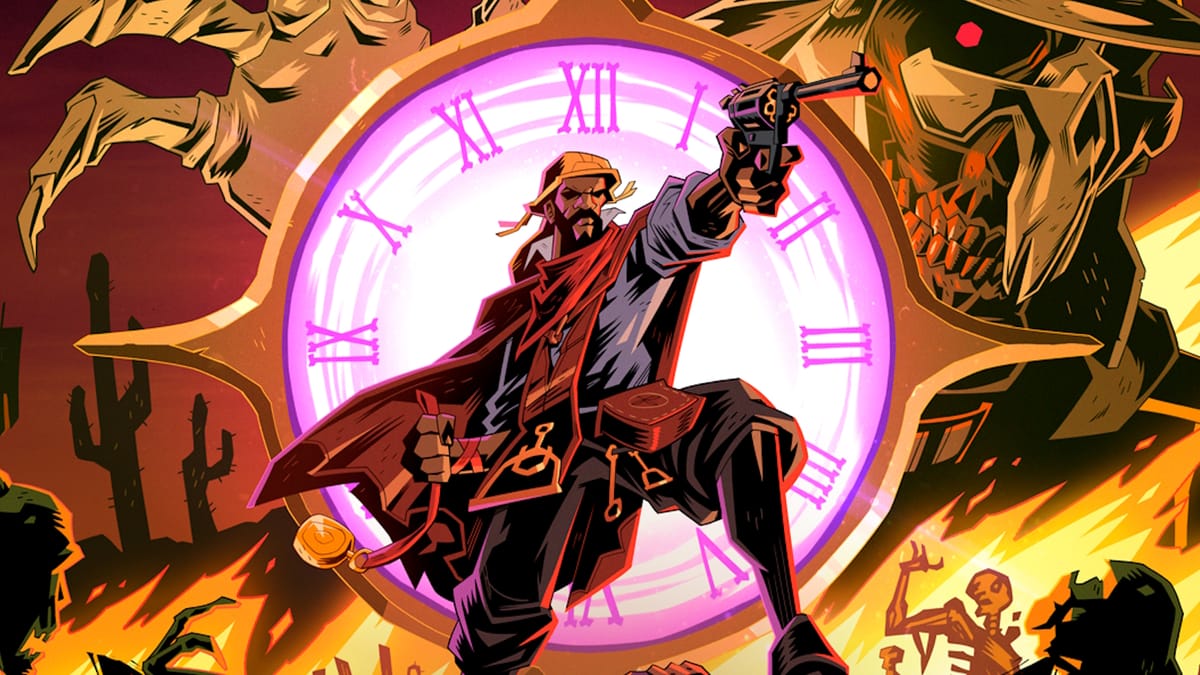
Welcome to Canudos, a small town in northeastern Brazil. If you hadn’t heard of it, I wouldn’t fault you. Until beginning my time with Hell Clock, I hadn’t either. Now, I understand why the developers decided to take this little-known historical municipality with a dark past as the setting for their ARPG roguelite.
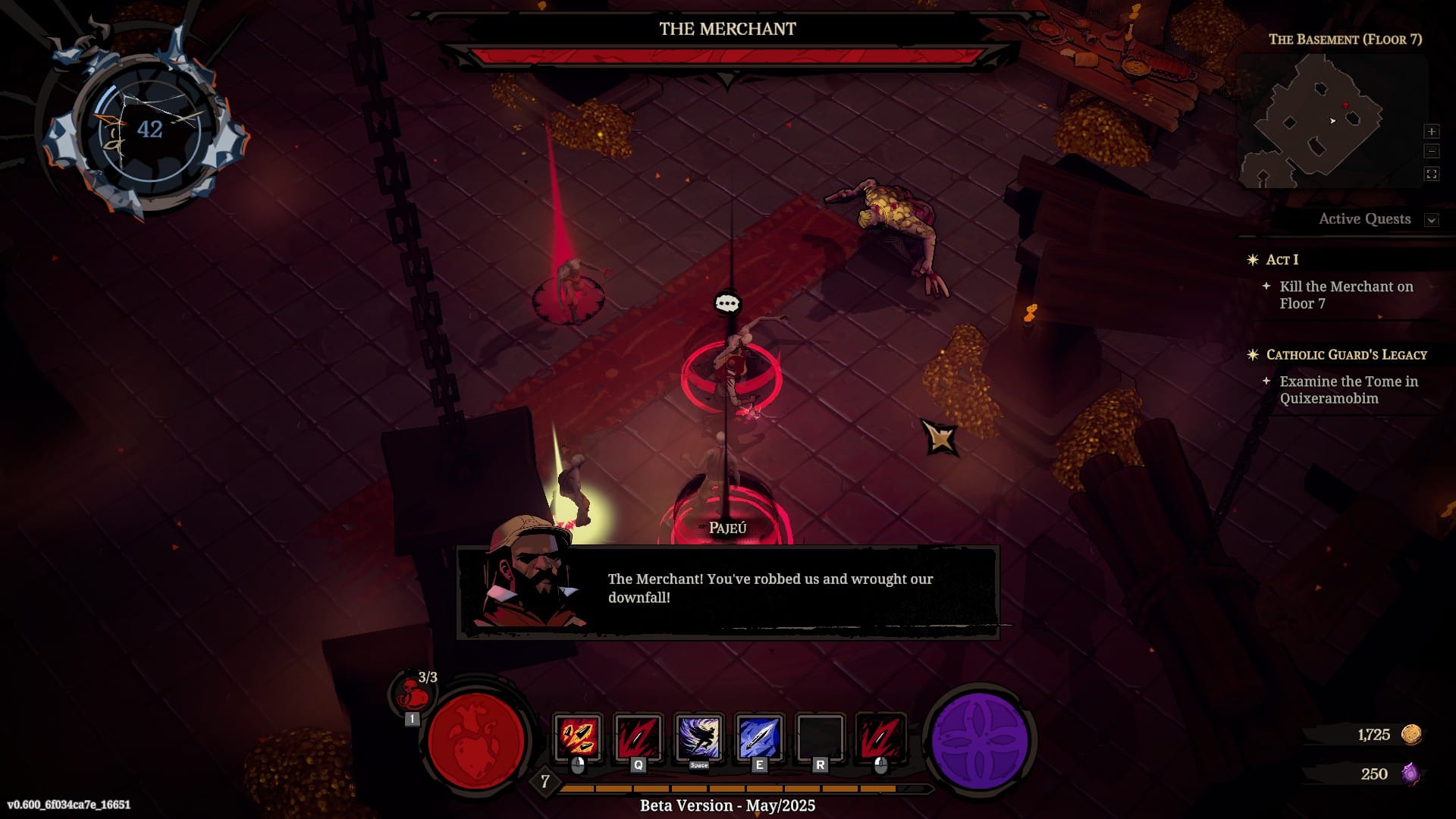
At its core, Hell Clock feels like a Diablo-styled ARPG, right down to the basic gameplay mechanics. Playing with a mouse and keyboard, I left-clicked to move and attack, right-clicked to use one special skill, and used keyboard shortcuts to use the others. You’ll use all the weapons and skills at your disposal to wipe out hordes of the undead as you delve ever deeper. With this well-established (and well-executed) core system, they’ve developed a roguelite I could see myself easily losing dozens of hours to.
As you work your way through the dungeon’s corridors, you’ll find yourself picking up gold and trinkets. Gold can be used at statues to grant buffs of varying effects, while each trinket will improve one of your stats for the current run. Slaughter enough enemies and you’ll level up, which lets you choose one of three boons to improve the stats of your current run. When you die or your 7-minute “Hell Clock” timer reaches zero, your run will end, and you’ll be sent back to the surface to begin again. That reminds me - don’t lollygag. That timer is an intentional design choice meant to push the pace of the gameplay and it keeps things bumping. You can do a few things to manipulate time during a run, but there’s always going to be pressure. Should you find that overwhelming, you can turn off the timer in the settings with Relaxed Mode, though.
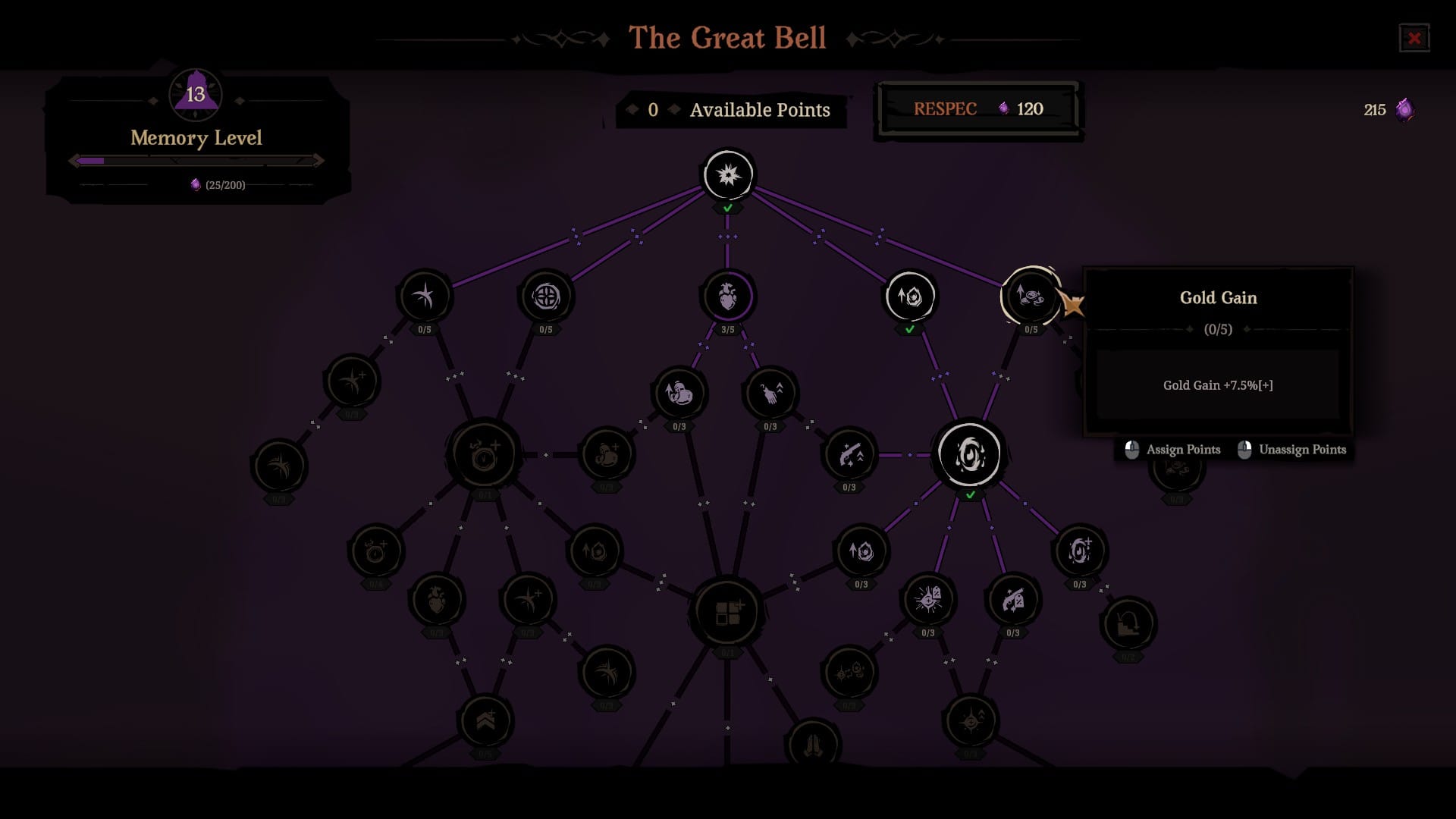
As anyone familiar with roguelites knows, the end of a run isn’t necessarily a bad thing. To the contrary, in Hell Clock, you can use currency in the form of crystals you pick up on your runs to buy gear, relics, and skills that will permanently improve your character, thus driving you to be more effective for that successful run.
As you improve your permanent stats, unlock new passive buffs from the bell tower, and gain access to a range of new skills, you’ll become stronger and stronger. The result, should you get the right buffs in a run, is our hero, Pajeu, in the form of a deadly whirling dervish that dismantles everything in its path. It’s every bit as satisfying as anything you’d experience in a high-end ARPG context, with an element of luck to drive it. While this might drive the min-max crowd a bit crazy, it makes for a wonderful bit of satisfying replayability.
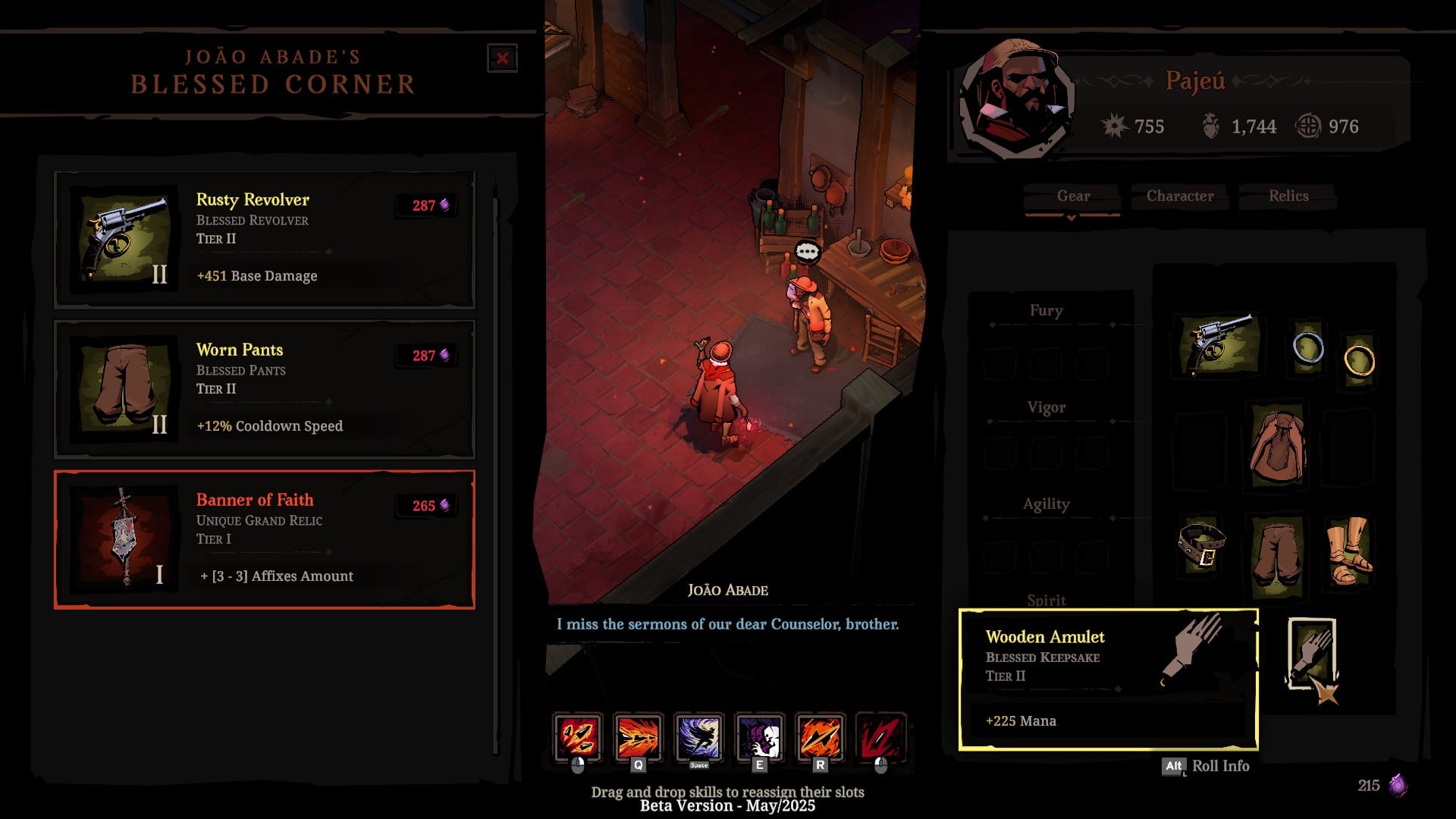
Just in terms of the visual design, Hell Clock shows a lot of promise. I love the incorporation of historically appropriate motifs. Even more striking is the game’s cell-shaded aesthetic, which provides notable pops of color despite dungeons being a relatively monotone affair. From an audio perspective, the soundtrack wears its heart on its sleeve with a main theme that sounds like it could’ve come from a minstrel in Tristram. There’s a fair bit of spoken dialogue from Pajeu and the other humans. The characters speak Brazilian Portuguese with English subtitles, which further reinforces the setting in a more immersive way.
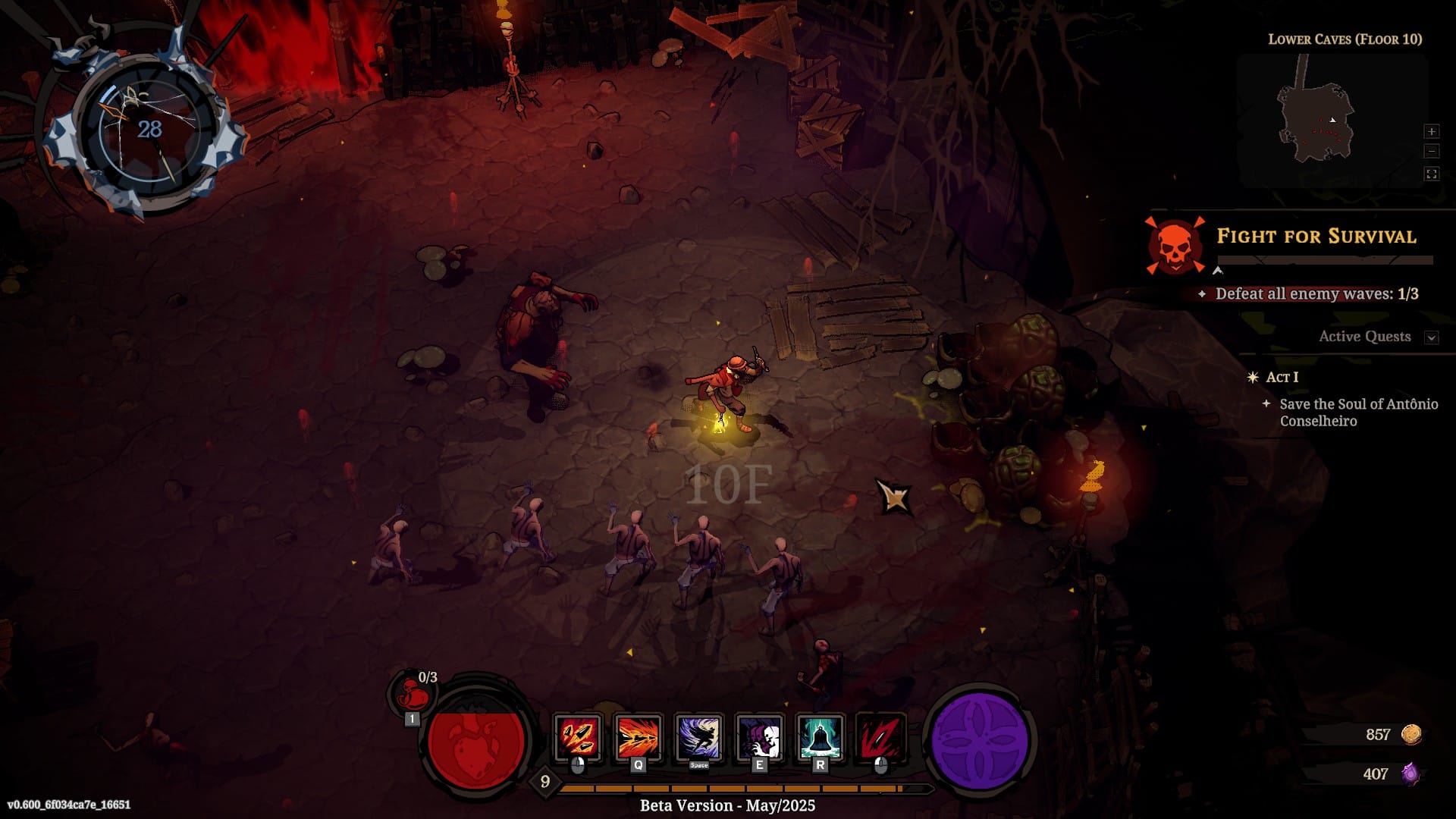
I’ve had a wonderful time getting my hands on the Hell Clock preview build. It’s a striking action RPG with addictive combat, engaging pacing, and fun, meaningful progression that, despite a seven-minute timer, will have you losing hours of productivity. I’m excited to get my hands on the final game when it’s unleashed on June 18, and for just $20, there’ll be plenty of game here to enjoy again and again.
